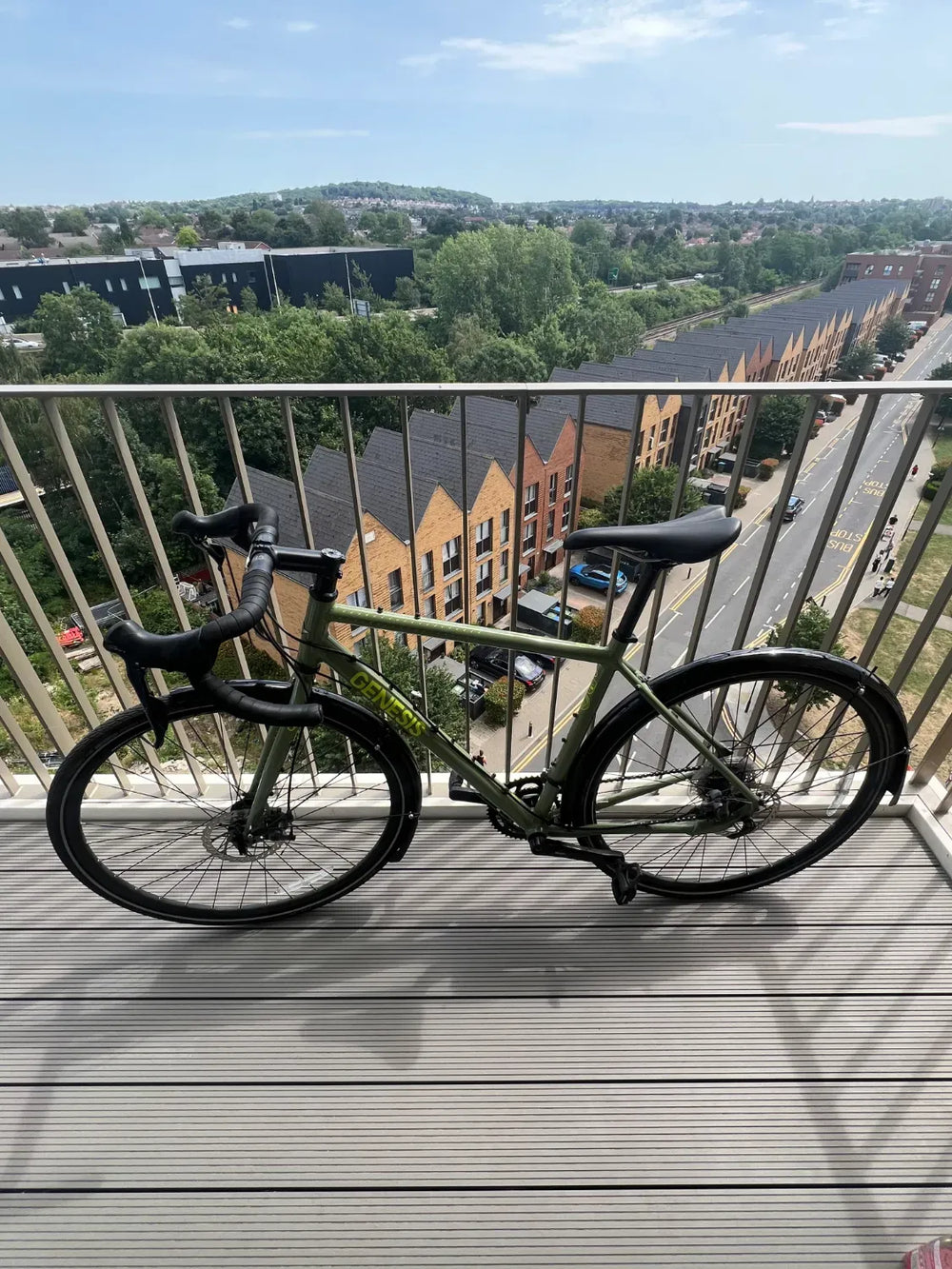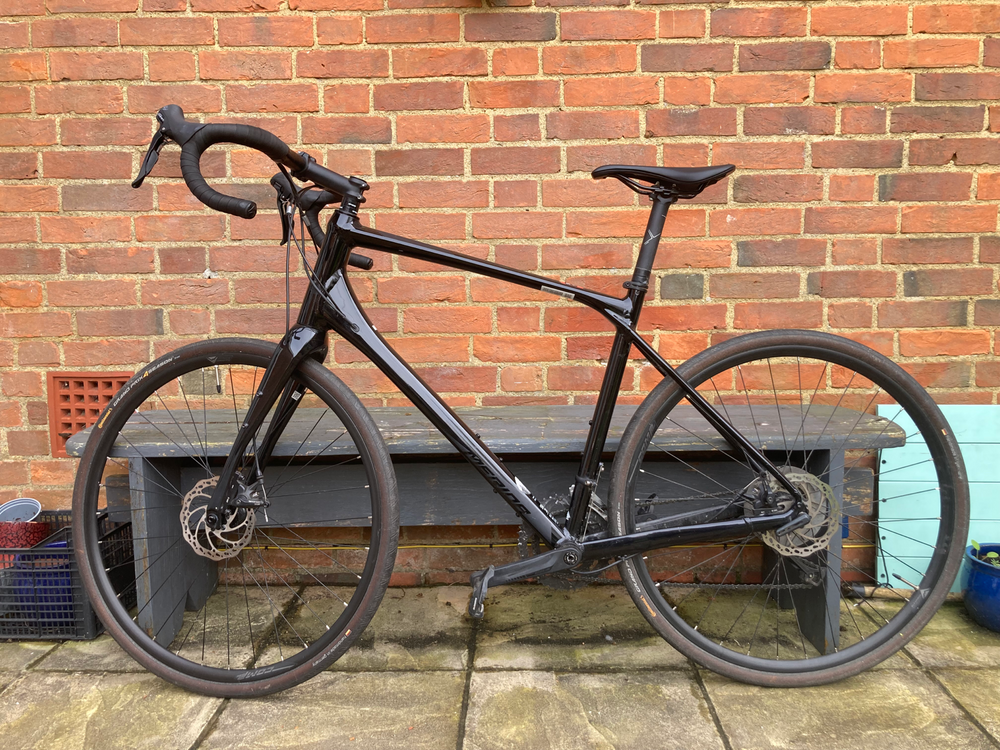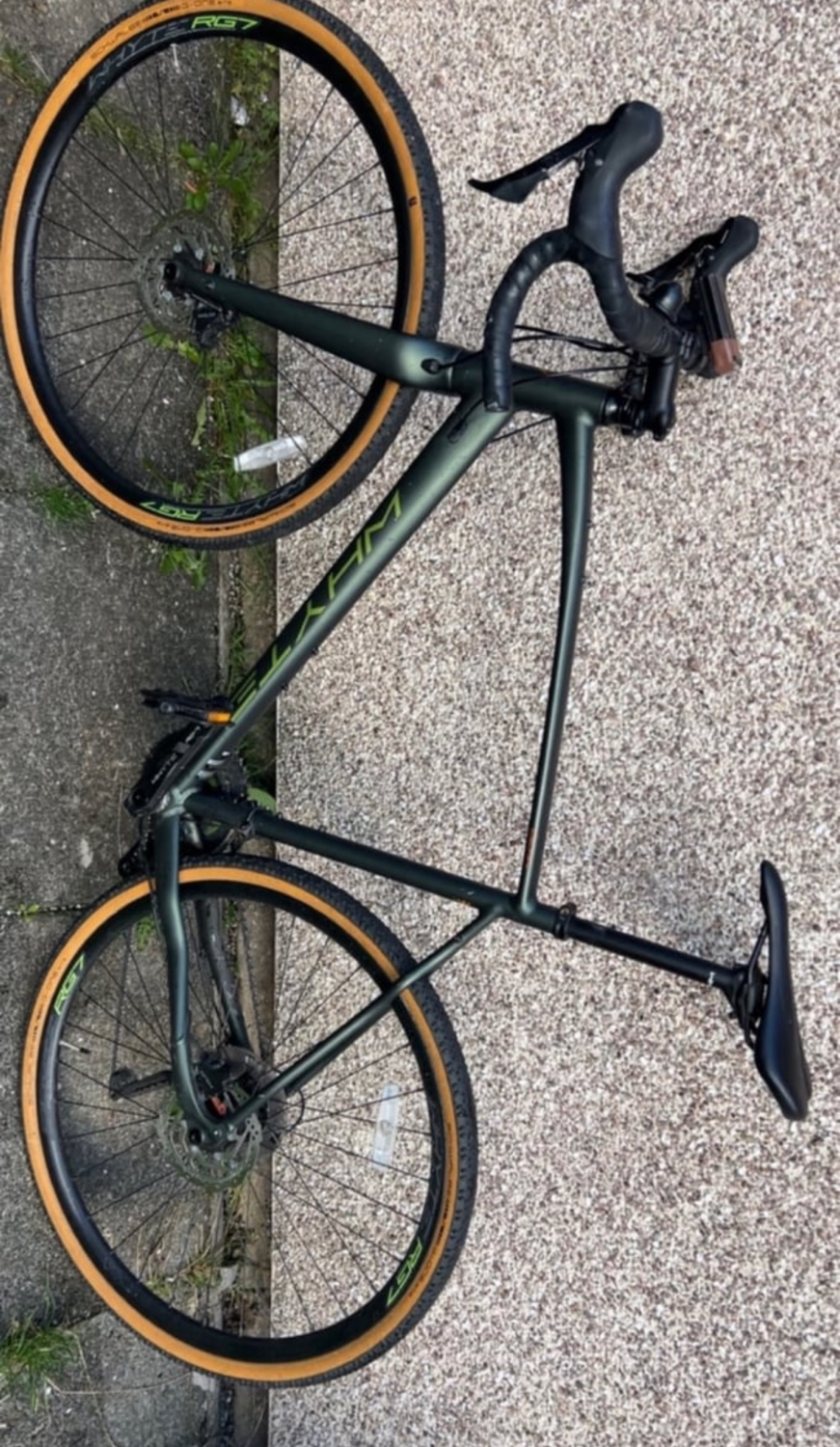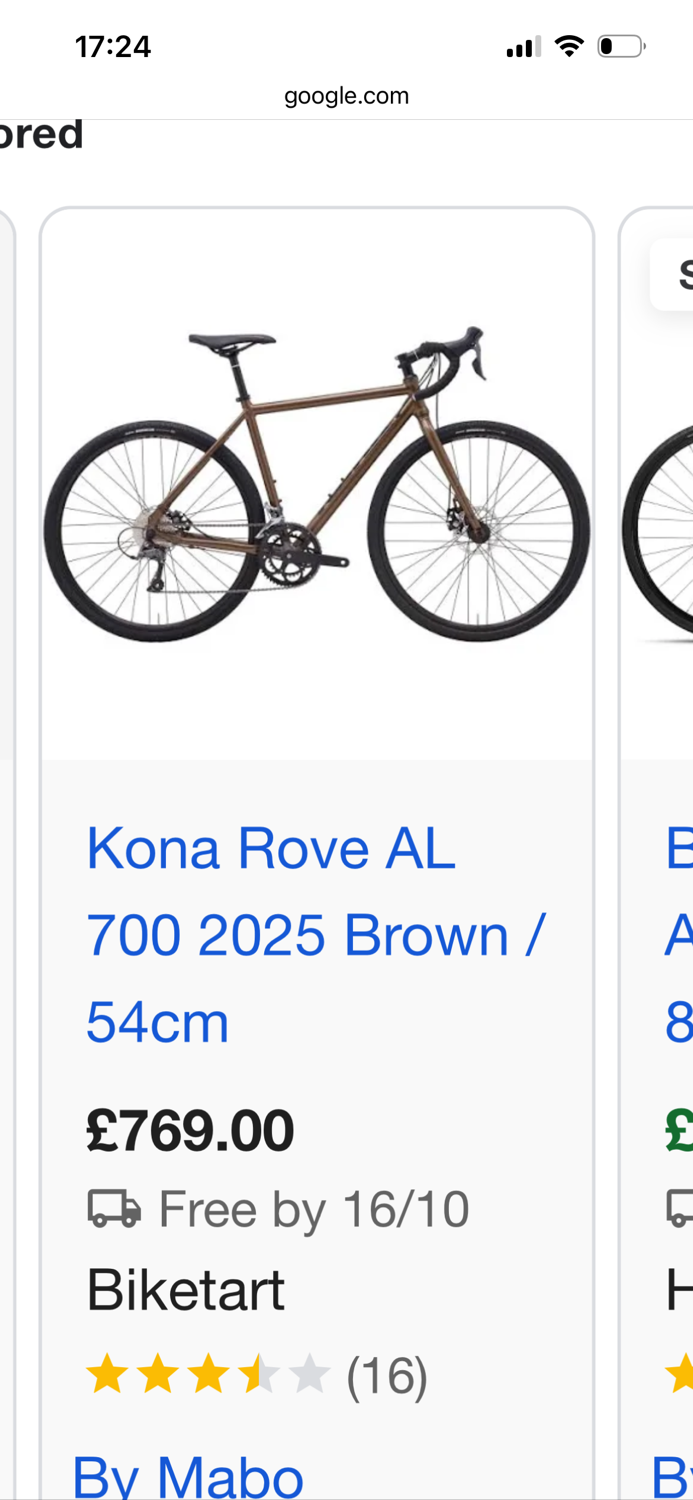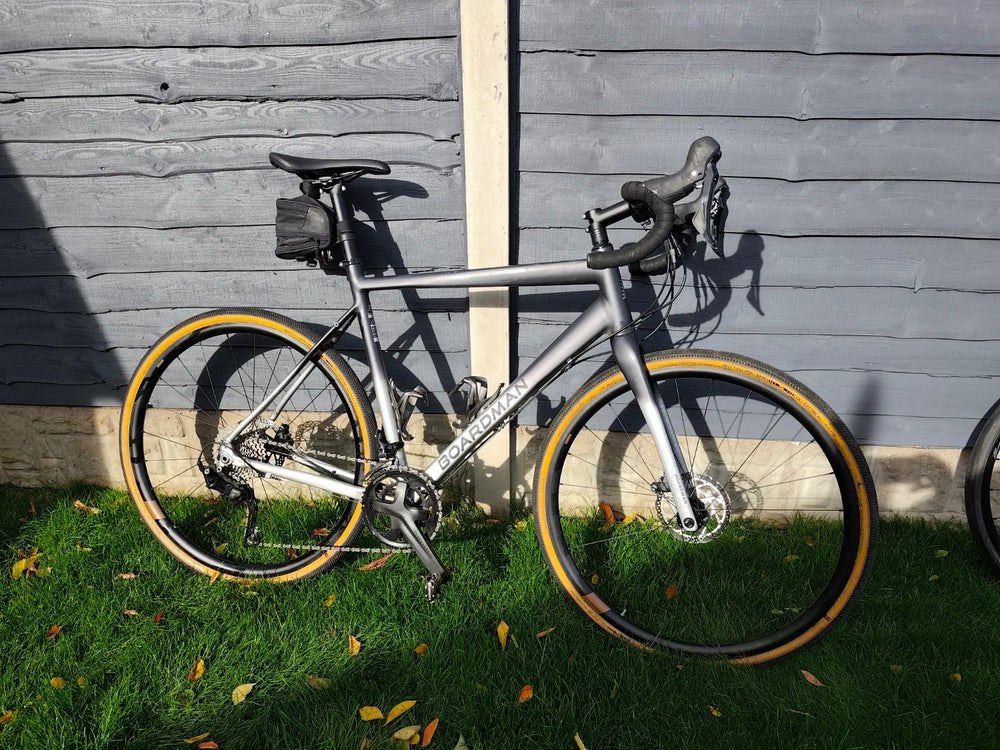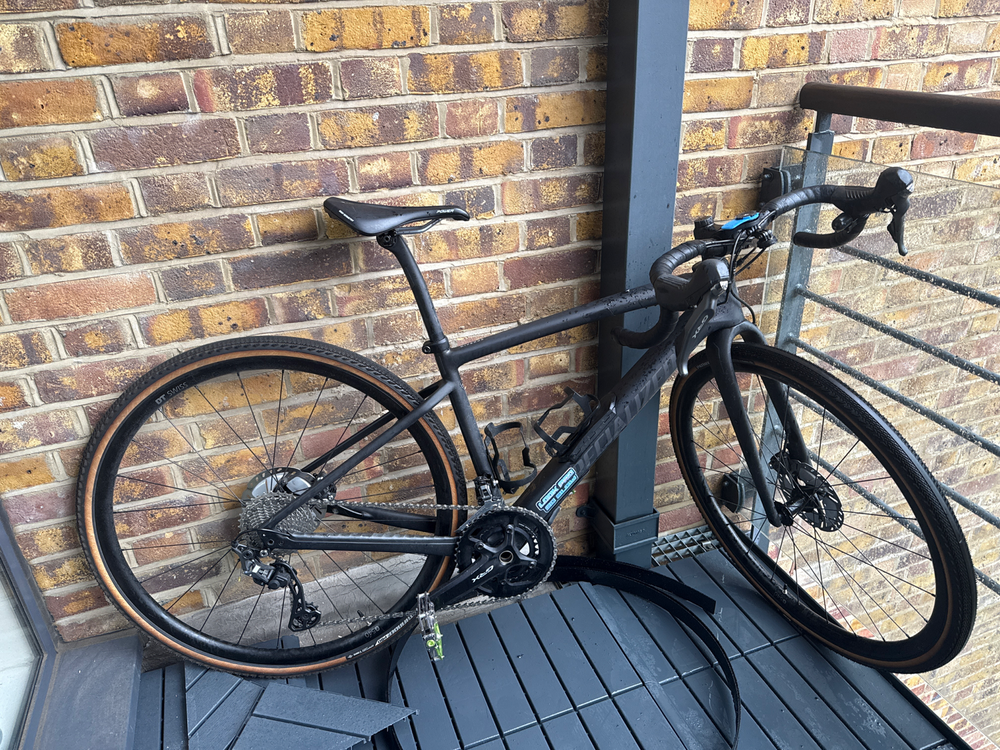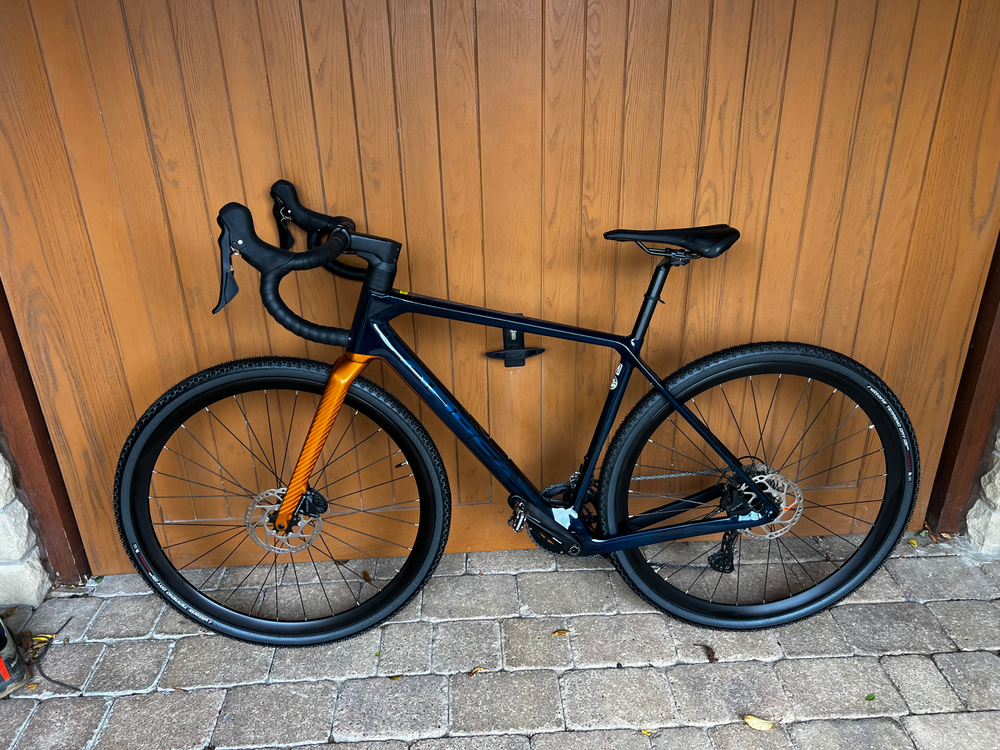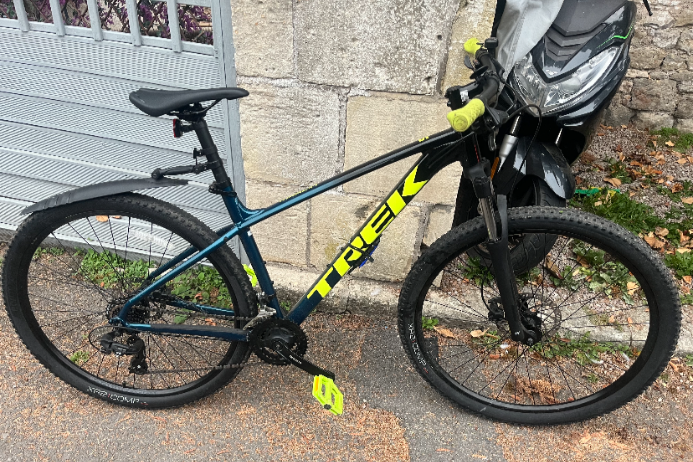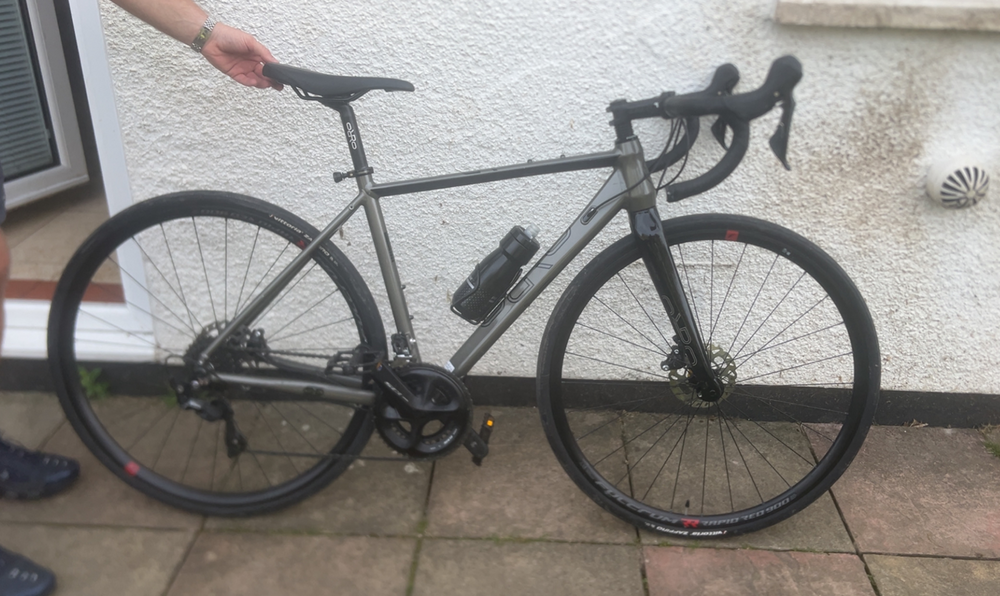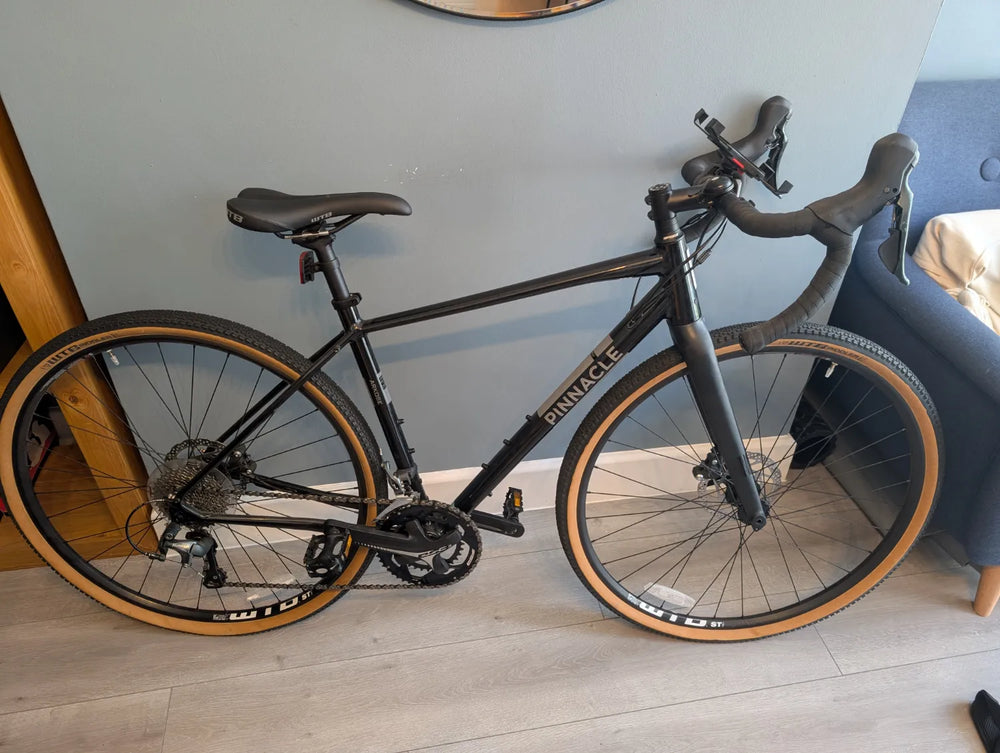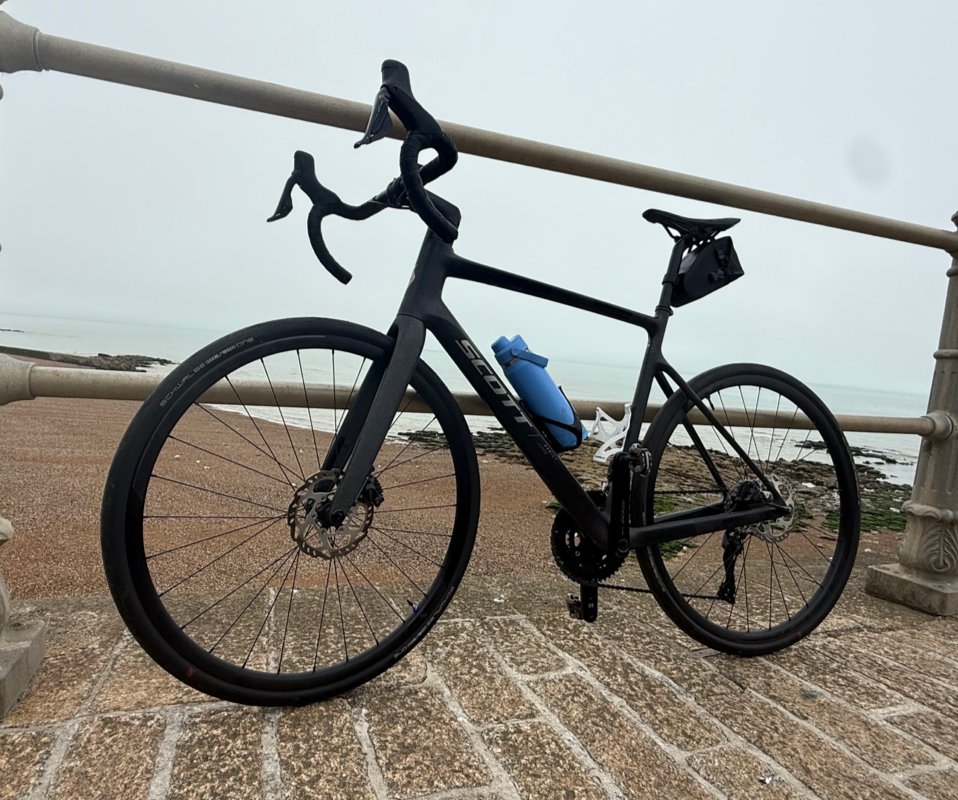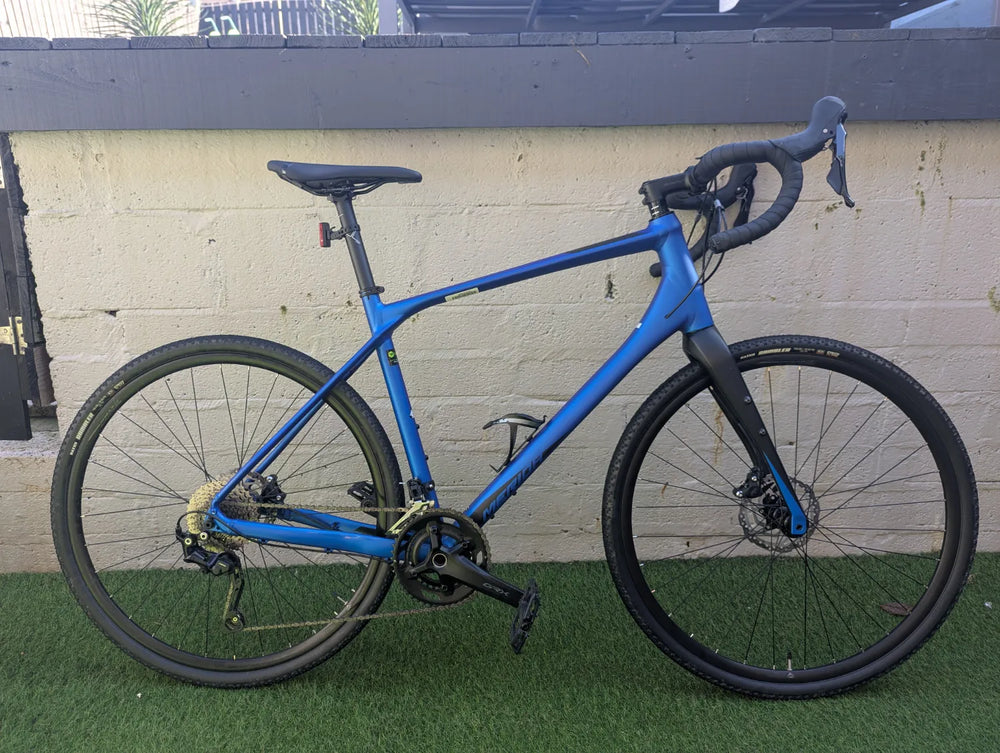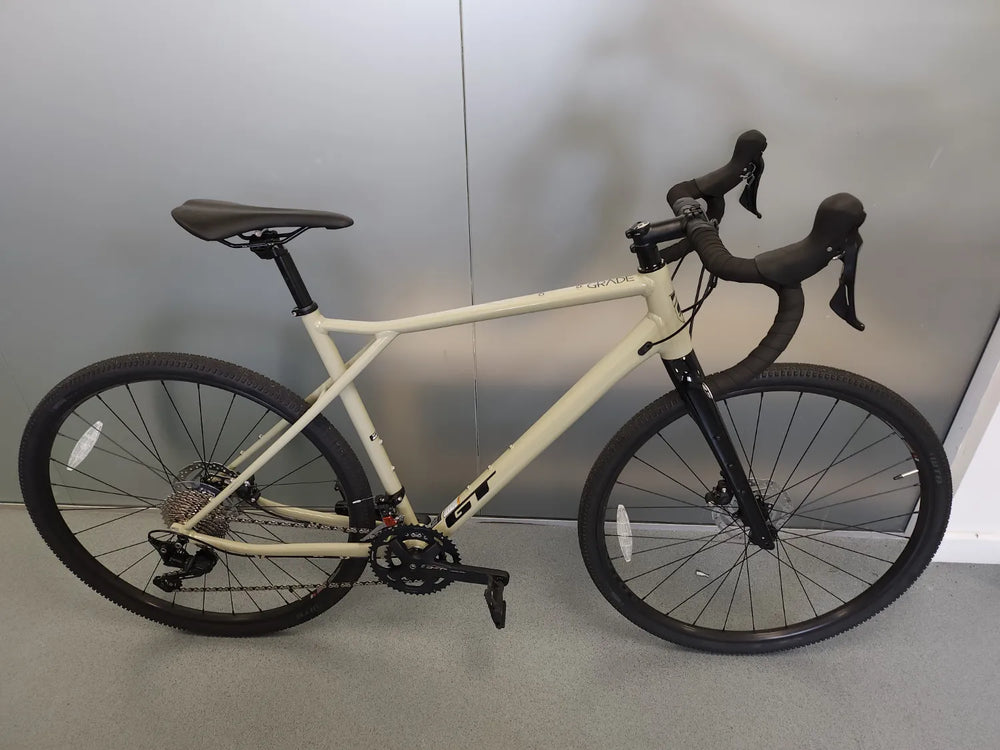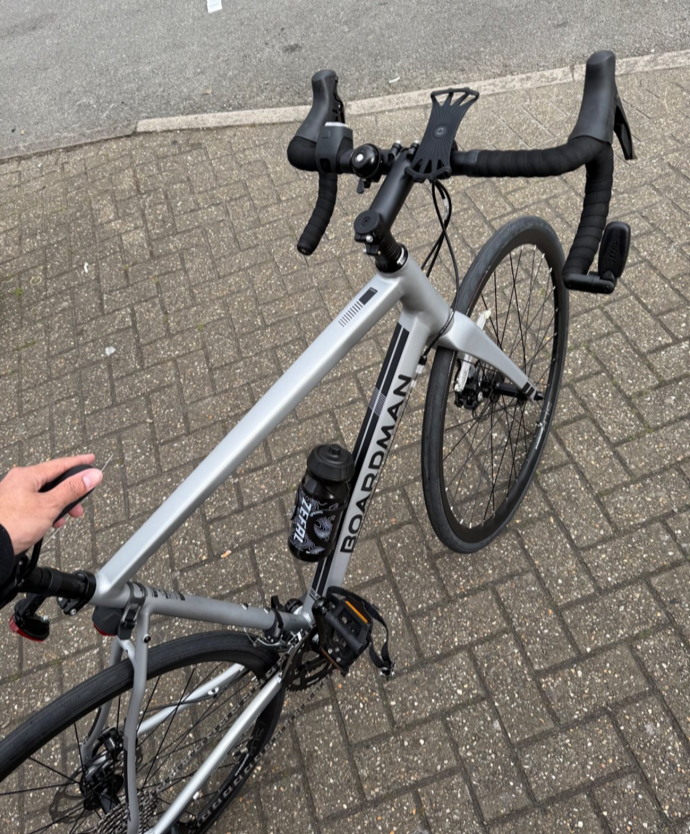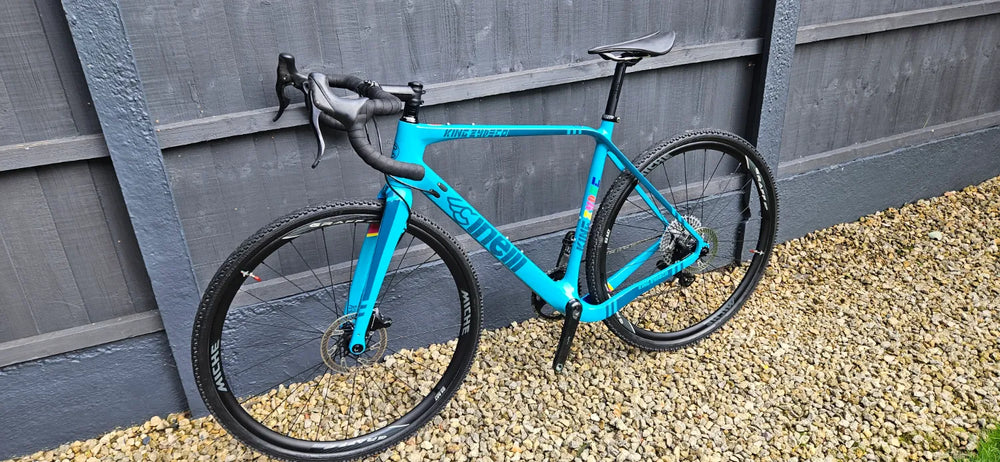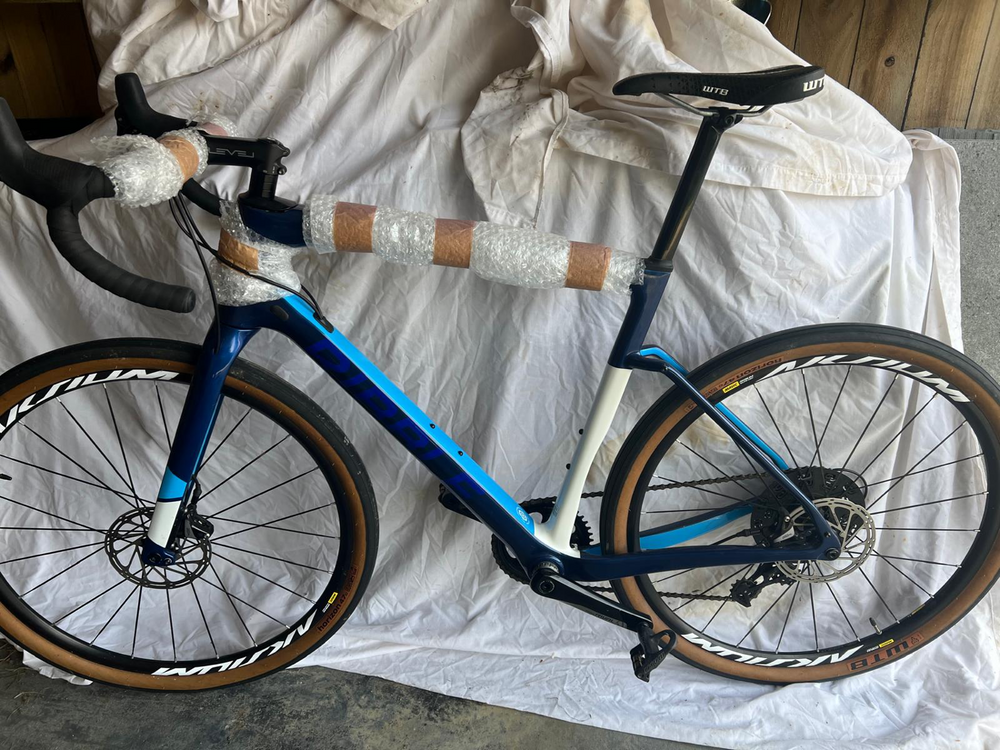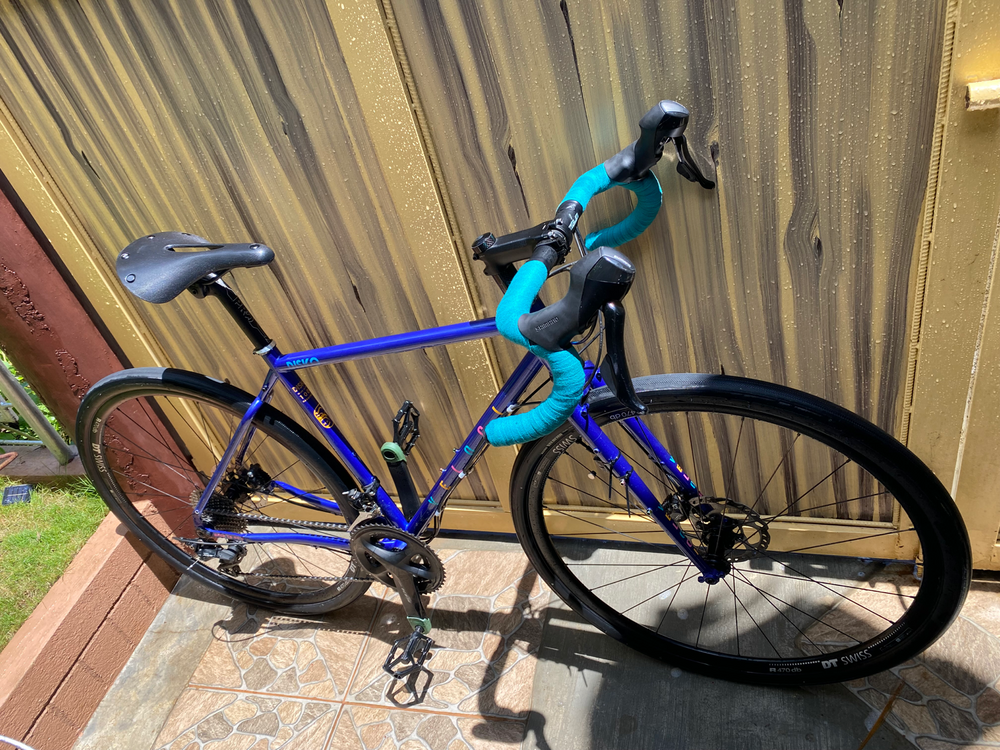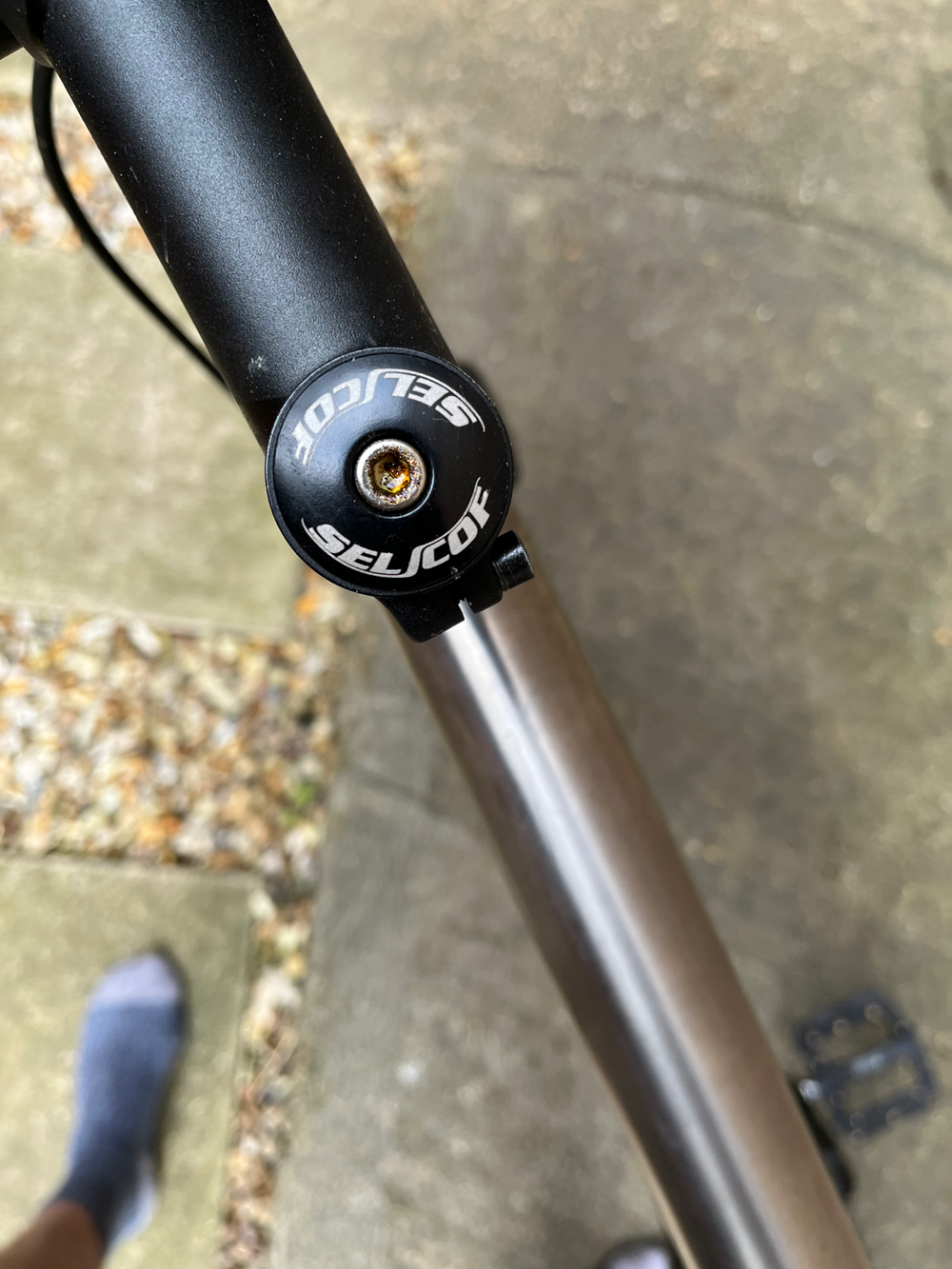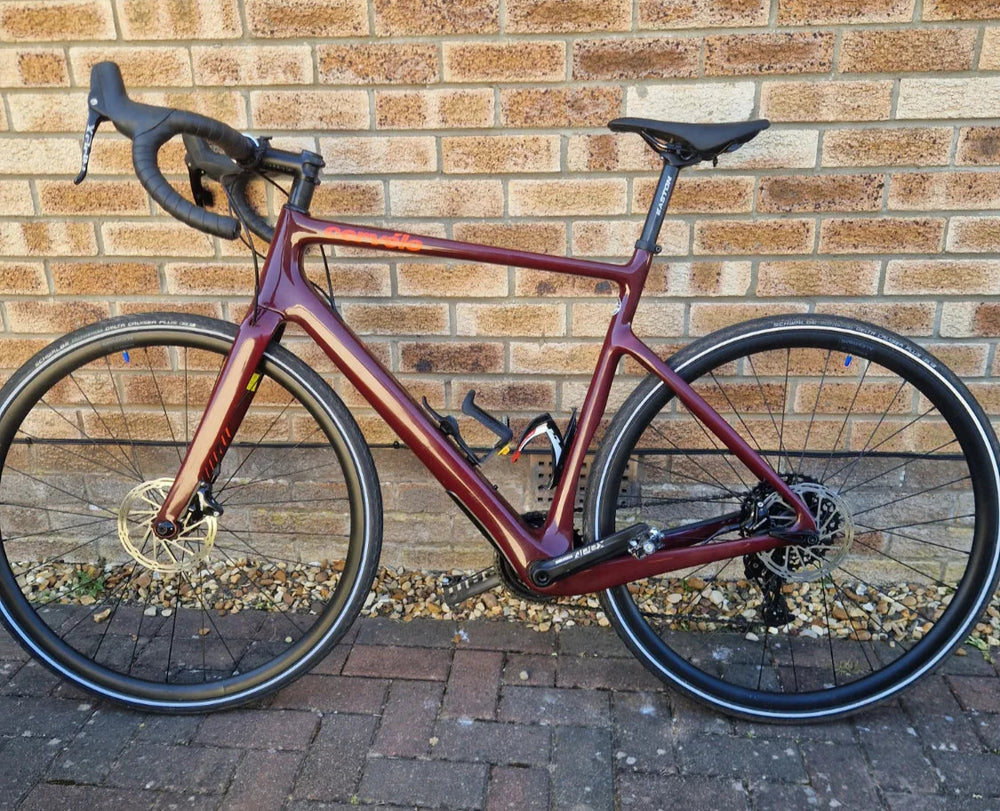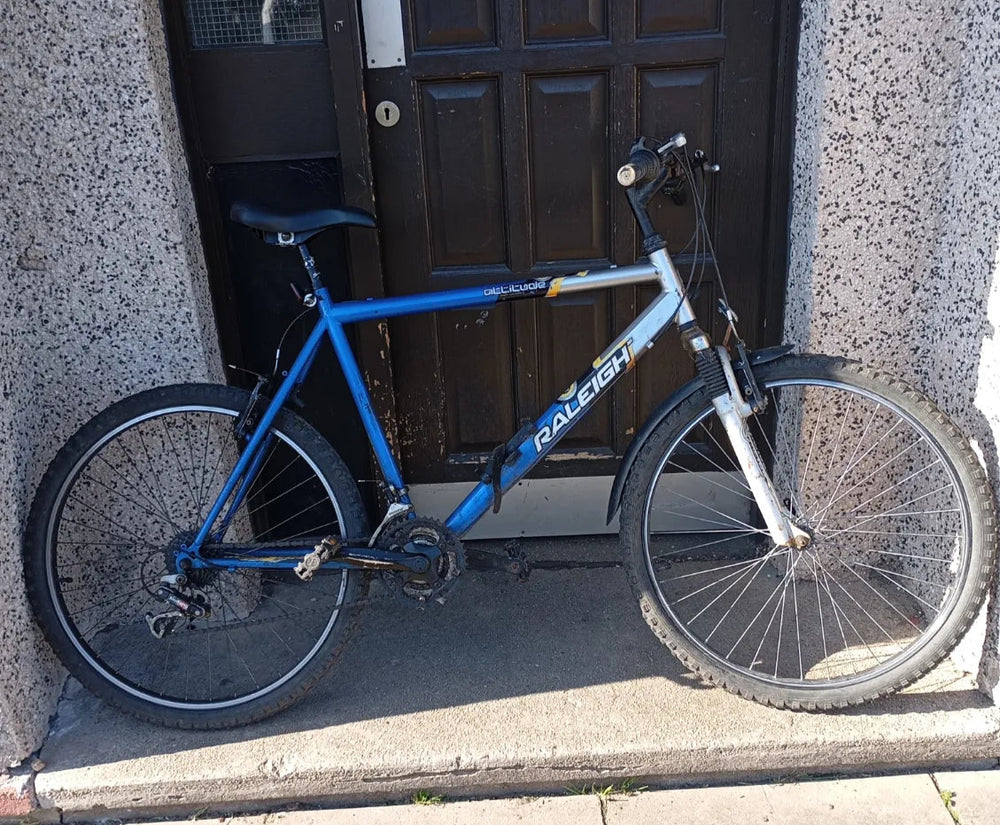Gravel Road Bikes
Looking for a bike that combines a road bike’s speed with the control of a mountain bike? Our range of second hand gravel bikes are perfect for off-road adventures and bikepacking.
The bike for all terrains - gravel bikes
Gravel bikes, also known as adventure bikes or all-road bikes, are a type of bicycle designed for riding on a variety of surfaces, including paved roads, gravel paths, dirt roads, and even light off-road trails. They are versatile and capable of handling different terrains, making them popular among cyclists who enjoy exploring mixed terrain or undertaking long-distance rides.
Here are some key features and characteristics of gravel bikes:
- Frame: Gravel bike frames are typically made of lightweight materials like aluminum, carbon fiber, or steel. They often have endurance-oriented geometry, which provides a more comfortable and stable riding position over long distances.
- Tire Clearance: Gravel bikes have wider tire clearance compared to traditional road bikes. This allows for the use of wider tires, usually in the range of 32mm to 45mm or even wider. The wider tires provide increased traction, stability, and comfort on rough surfaces.
- Disc Brakes: Most gravel bikes come equipped with disc brakes, either hydraulic or mechanical. Disc brakes offer reliable stopping power and perform well in various weather conditions and terrains.
- Gearing: Gravel bikes often feature wider gear ranges to accommodate diverse terrain. They may have a combination of double or single chainrings paired with a wide-range cassette, enabling riders to tackle steep climbs and maintain speed on descents.
- Additional Mounting Points: Gravel bikes usually have numerous mounting points on the frame and fork for attaching racks, fenders, and bags. This allows riders to carry gear and supplies for bikepacking or long-distance touring.
- Suspension: While not all gravel bikes have suspension, some models come with front suspension forks or incorporate suspension features in the frame design. This can enhance comfort and control when riding over rough surfaces.
- Gravel-specific Components: Gravel bikes often include components designed to handle the demands of mixed terrain riding, such as durable wheels, wider handlebars for improved stability, and lower gear ratios for better climbing ability.
Gravel bikes fill the gap between road bikes, which excel on smooth pavement, and mountain bikes, which are better suited for off-road trails. They offer a versatile and comfortable riding experience, allowing cyclists to explore a wide range of terrains and enjoy long adventures on two wheels.
How do I find a suitable gravel bike for me?
Finding the most suitable gravel bike for you involves considering several factors that align with your riding preferences, needs, and budget. Here are some steps you can follow to find the right gravel bike:
- Determine Your Riding Style and Terrain: Consider the type of riding you plan to do. Are you looking to ride mostly on gravel roads, smooth dirt paths, or do you intend to tackle more technical off-road trails? Understanding the terrain you'll be riding on will help determine the specific features and capabilities you need in a gravel bike.
- Frame Material: Decide on the frame material that suits your preferences and budget. Aluminum frames are lightweight and relatively affordable, while carbon fiber frames offer excellent vibration damping and are often lighter. Steel frames are known for their durability and a comfortable ride quality.
- Frame Geometry: Consider the frame geometry that matches your riding style. Gravel bike geometries can vary, with some favoring a more upright and relaxed position for long-distance comfort, while others lean towards a more aggressive and performance-oriented riding position.
- Tire Clearance: Evaluate the tire clearance options of the gravel bikes you're considering. Look for a bike that can accommodate the tire width you desire for your intended terrain. Wider tires provide more stability and comfort on rough surfaces, while narrower tires are faster on smooth roads.
- Brakes: Decide between mechanical or hydraulic disc brakes. Hydraulic disc brakes generally offer better stopping power and modulation, but mechanical disc brakes are easier to maintain and repair.
- Budget: Determine your budget range for a gravel bike and try to find options that fit within that range. Gravel bikes can vary significantly in price, so having a clear budget will help narrow down your choices.
- Research and Reviews: Read reviews, watch videos, and seek opinions from other riders to gather more information about specific gravel bike models you're considering. This can provide valuable insights into their performance, reliability, and customer satisfaction.
- Reach out to us! If you're still uncertain or need expert guidance, contact one of our ride guides.


